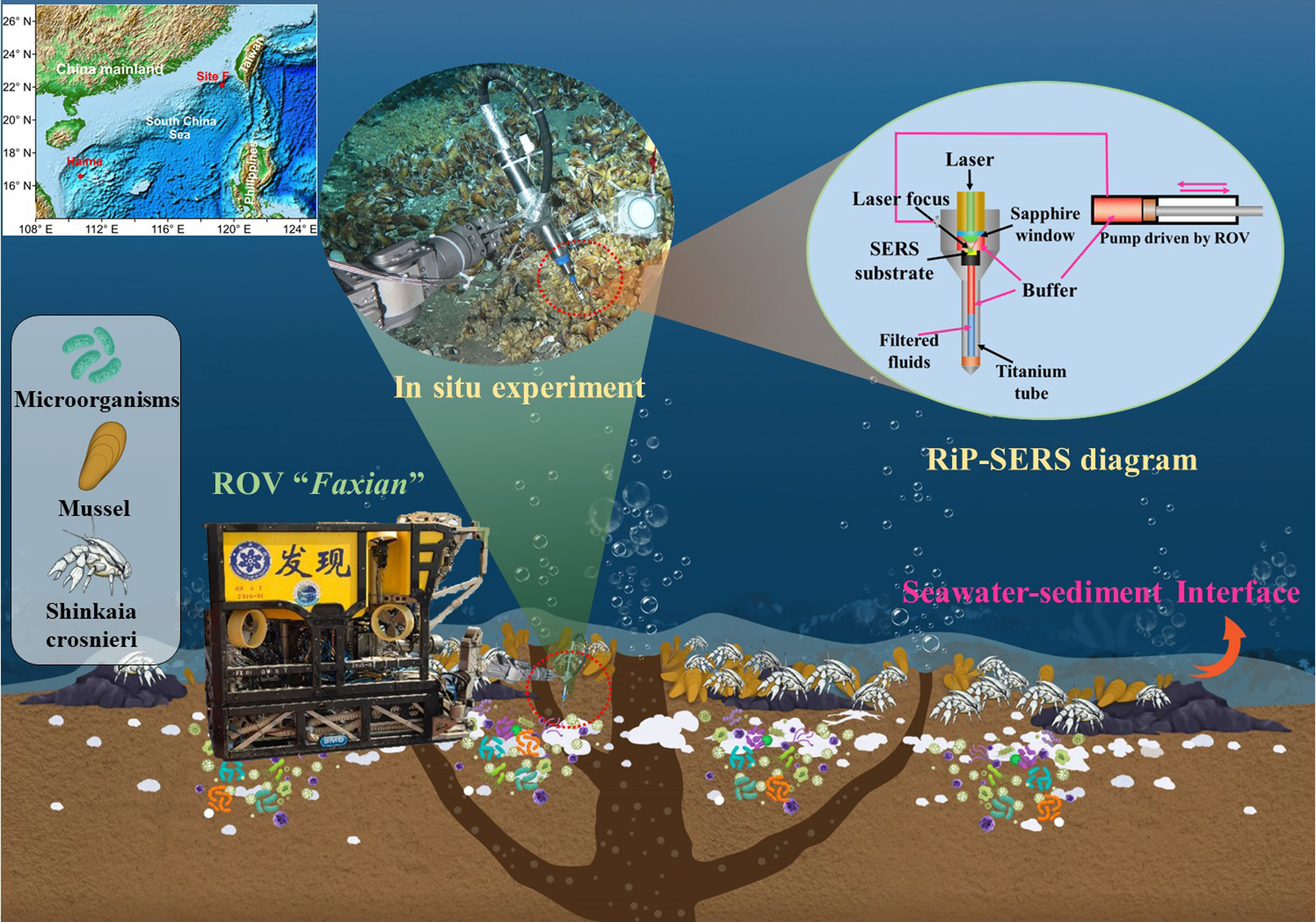The phenomenon of chemically synthesized life in extreme deep-sea environment is an international research hotspot in deep-sea science and life science. However, due to the extremely low concentration of organic macromolecules such as extracellular metabolites synthesized by deep-sea chemicals and the complex surrounding environment, there is no in situ detection technology in the world.
Recently, the research team led by Prof. ZHANG Xin from the Institute of Oceanology of the Chinese Academy of Sciences (IOCAS) and co-researchers from the Institute of Physics successfully used the early developed new nanomaterial, which breaks through the Surface Enhanced Raman spectroscopy (SERS) detection technology in the deep-sea environment resistant to high pressure, low temperature, high salt and turbid fluid, and developed a new type of Raman scattering insertion probe (RiP-SERS).
The study was published in Applied Surfaces Science on Feb. 26.
Researchers designed a new type of RiP-SERS and adjusted the SERS substrate at the Raman laser-focusing position (the distance was 3 ± 0.5 mm). At the cold seep vents of the Formosa Ridge in the South China Sea, researchers used ROV Faxian equipped with RiP-SERS system to successfully achieve the pressure resistance test for the SERS substrate.
What's more, they successfully used RiP-SERS to obtain Raman spectral data of bioinformation molecules in the seawater-sediment interface of Haima cold seep vents, and found that the marine-biome interface was rich in acetyl-CoA, β-carotene, and four amino acids. The success of this experiment adds a new method for future deep-sea biomolecular detection.
"The SERS substrate can be used for macromolecule detection in complex industrial systems because it can withstand a complex deep-sea cold-seep environment (pressure, salinity, pH, and metal-salt presence)," said WANG Siyu, first author of the study.
"This is another breakthrough after the team developed RiP-Cs, RiP-Pw, RiP-Hv and RiP-Gh probes," said Prof. ZHANG, corresponding author of the study.
This study was supported by the National Natural Science Foundation of China, the Strategic Priority Research Program of Chinese Academy of Sciences, the Key project of Ocean Research Center, Chinese Academy of Sciences, the Shandong Provincial Natural, Science Foundation, etc.

Fig. 1 Conceptual diagram of the in-situ SERS detection of the microbial community in deep-sea cold seep vents: Conceptual design of RiP-SERS on the right side of the panel; photo of in situ detection of RiP-SERS on left side of panel.

Fig. 2 (a) In situ Raman spectra from biomes in the cold seep vent at the Formosa Ridge in the South China Sea (a, no SERS; b, with SERS); (b) Comparison of SERS spectra of various biomolecules with in situ Raman spectra.
S Wang, R Pan, W He, L Li, Y Yang, Z Du, Z Luan, X Zhang*. (2023). In situ surface-enhanced Raman scattering detection of biomolecules in the deep ocean. Applied Surface Science, 620, 156854.
(Text by WANG Siyu)
Media Contact:
ZHANG Yiyi
Institute of Oceanology
E-mail: zhangyiyi@qdio.ac.cn
(Editor: ZHANG Yiyi)

